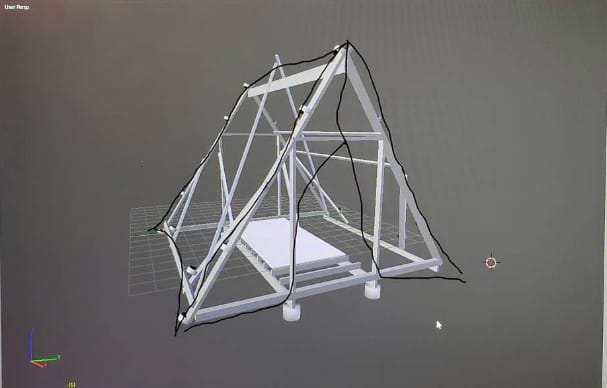
This article contains affiliate links, upon purchase I make a small commission at no extra cost to you.
This post is about two highly insulated shelters I made with rigid foam, raised off the ground and covered in a tarp.
These shelters are super simple, super tolerable for the chemically sensitive and are ideal for mold avoidance in cold weather (or even in hot weather).
This has the same insulative value that a house would have. I was very warm inside in Canadian winters with one space heater. This shelter can work in any climate, though it will not survive a hurricane! It was highly tolerable for MCS and a good setup for mold avoidance.
These shelters were an incredibly important step in me healing enough to live inside. The shelter was the last step in mold avoidance before I moved back inside. I moved back into regular housing for the first time in 8 years, and I continue to recover.

This is something I wish I had known about much earlier on, as tent living and custom trailers/vans are difficult to make and to live in, especially in cold weather. It’s hard to keep a steady temperature, it’s difficult to insulate trailers and vans, and it’s hard to keep them from going moldy. This shelter solved all those problems.
A wood frame like mine (pictured) is needed to protect the shelter from high winds and snow. My frame was very robust, and survived a massive windstorm and big snowfall. If you don’t require snow and wind protection, simply tie up a tarp over the raised-up foam shelter and skip the frame altogether.
Building the Simple Shelter
The shelter is made of a plywood platform and a wood frame, though you could use metal or another material. We used some pressure-treated wood for the framing and some non-treated wood.
Most of the points touching the ground are stumps, for added protection from rotting out (you can see that in the video.
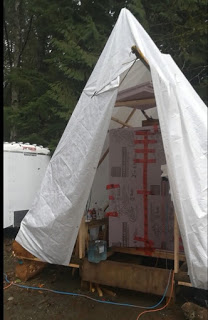
The interior is an XPS foam box. The box was made to fit the plywood, it was 4 x 6 feet but you can make this any size you choose. The height we decided on was 6 ft.
You can use any thickness of XPS that you want. Though for this to hold itself up without any supports (other than tape) as it’s designed, I would use 2 inches.
What I would do differently next time is paint the foam with ECOs primer and paint and possibly seal with shellac. This will seal in flame retardants and the very minimal off-gassing. Most extremely sensitive people do well with this foam.
I made a model to test out ECOS paint and shellac and it worked really well (both the porch paint and the vinyl siding paint worked). With or without Zinsser Bullseye Shellac.
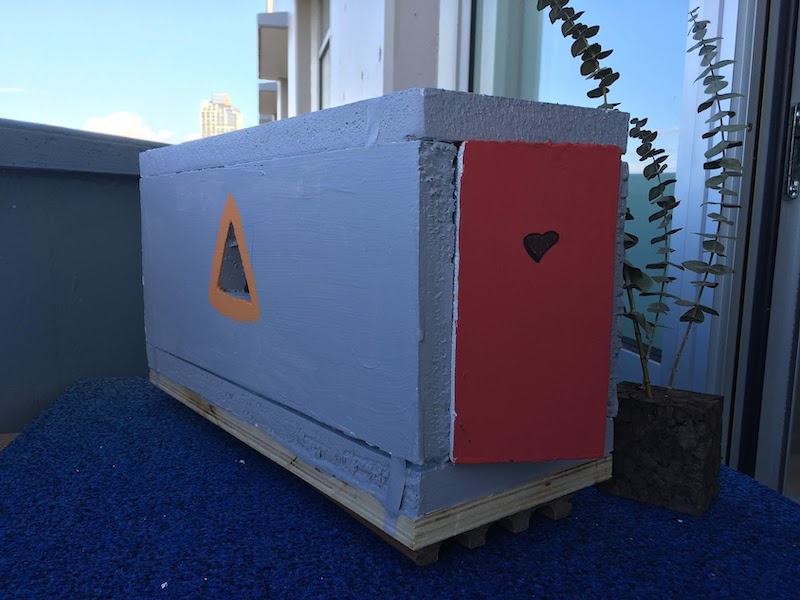
I would also use clear tape next time because it would look better!
I would buy a tarp that covered the wood but still had air movement underneath.
When you are heating you should seal up as much as you can on the inside with the tape that you tolerate. Green painter’s tape or Siga tape are the most tolerated types.
When taping the outside in heating season do not cover the seams fully, just enough to hold it together like in the videos.
In cooling season it’s the opposite (if you did put AC in there).
Such a robust frame is not always necessary. You can build the plywood platform, with the foam box on top and simply string a tarp over this if you don’t have strong winds or a lot of snow.
A number of details are necessary to control condensation on the inside of the tarp in heating season, as condensation can drip down onto the wood or foam. We used spacers on the sides, a criss-cross on the top, and a piece of plastic suspended above the roof of the foam shelter to stop water from dripping down and wood from getting wet and moldy.
This shelter worked extremely well though there are things to keep an eye on in the long term. Here are some video tours which will help you to picture how it works, show the spacers, and other details like windows and power.
The whole thing was completed with some volunteer labor and some paid labor for 1000 CAD. I used two 100 ft extension cords (10 or 12 gauge) to power this heater and my laptop and light. You need one dedicated 10-12 gauge cord if it’s 100 ft, for a 12.5 amp, 1500 watt heater. Plenty of heat for a small space! You can’t have anything else on that circuit in the house it’s running from or inside on that cord).
I used this plugin thermostat to control the temperature and keep it very even (which needed a surprising amount of offgassing). I strung up this bulb (the string needed some offgassing).
I used the Mondo King Thermarest and I covered it in two Husky bags (taped together) to keep it dry. A small fridge was kept outside in my trailer, on a different circuit.
I used this little portable tub to “shower” in outside, and the luggable loo. More pictures of the framing:
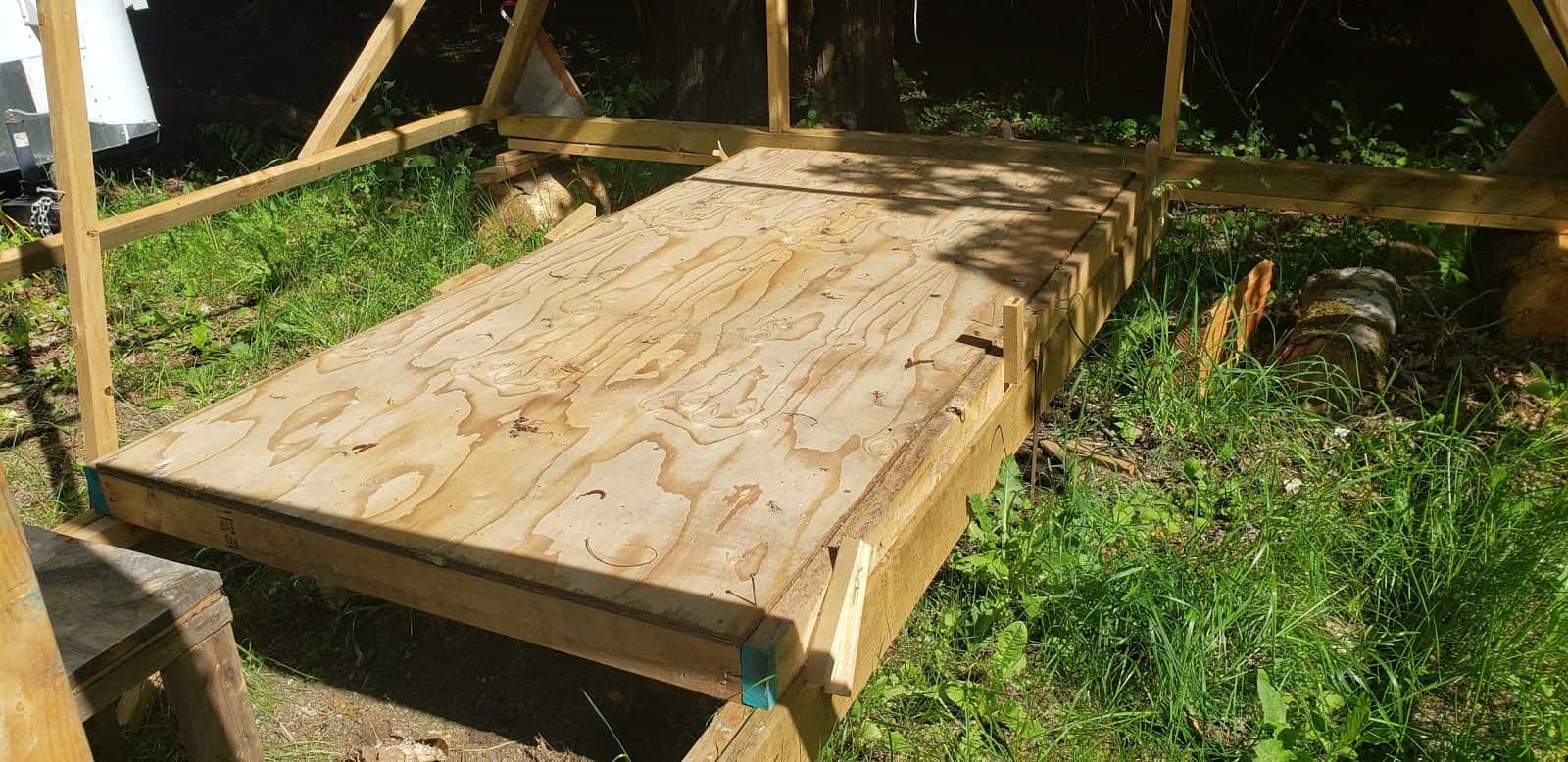
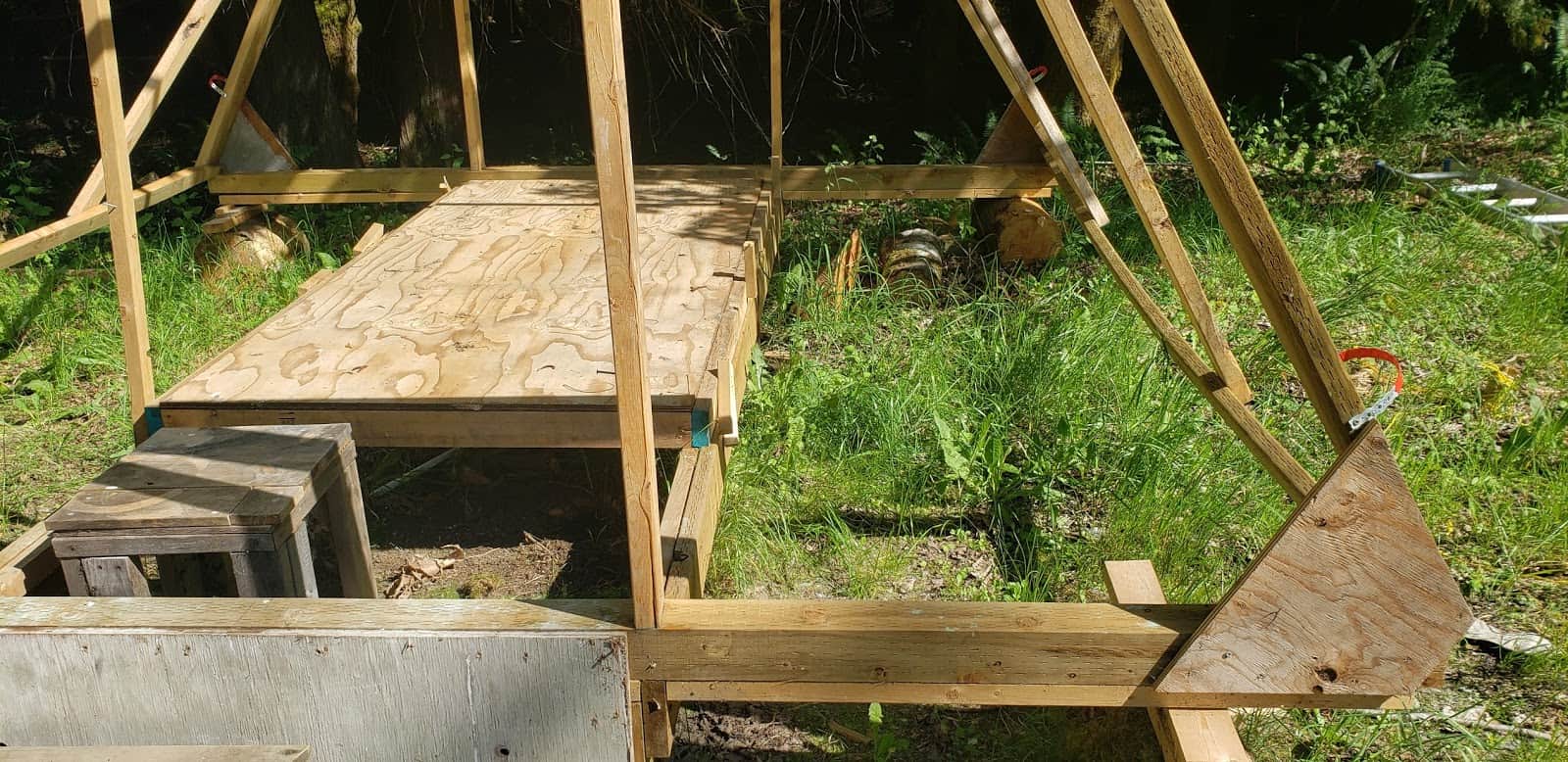
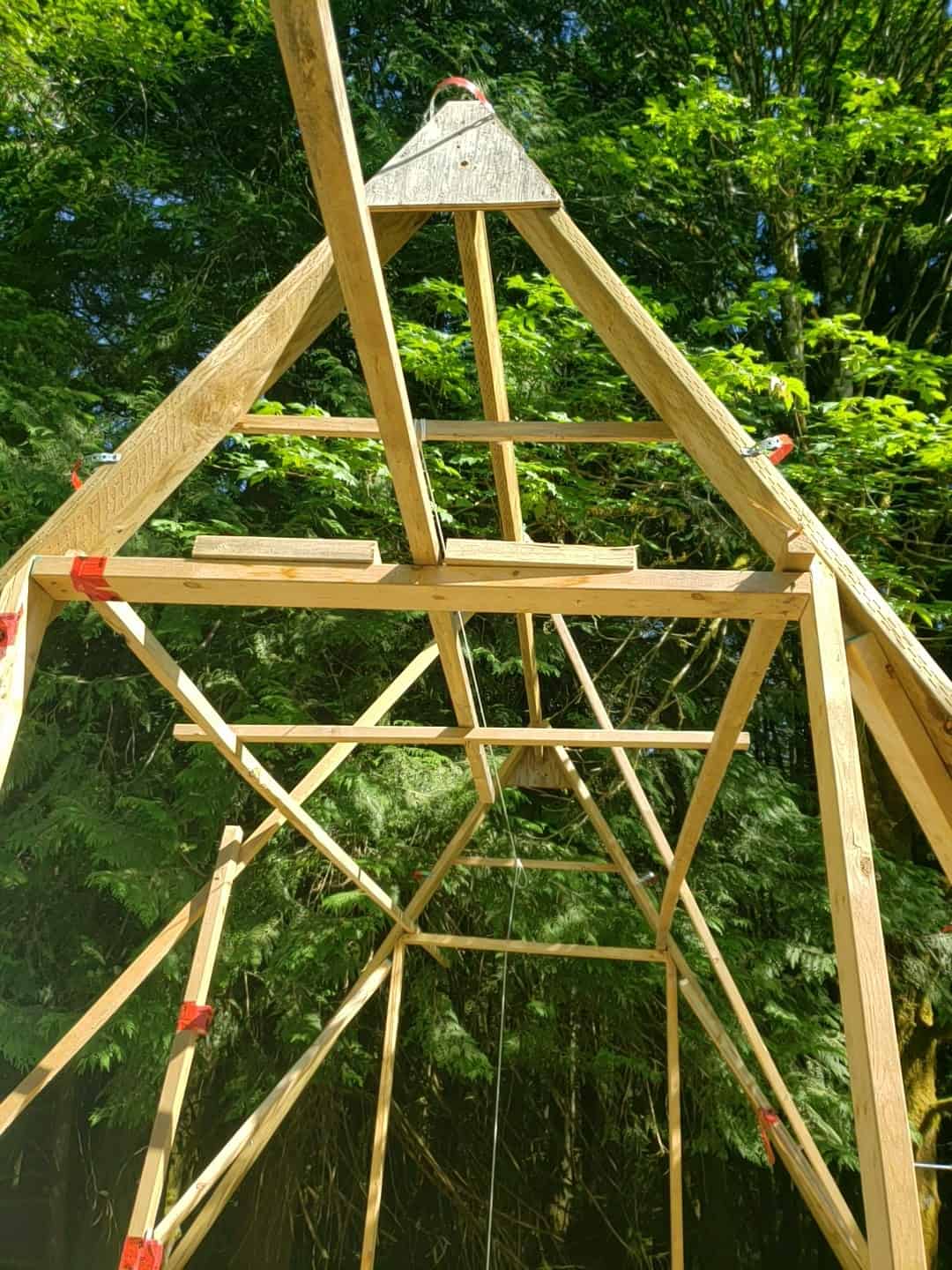
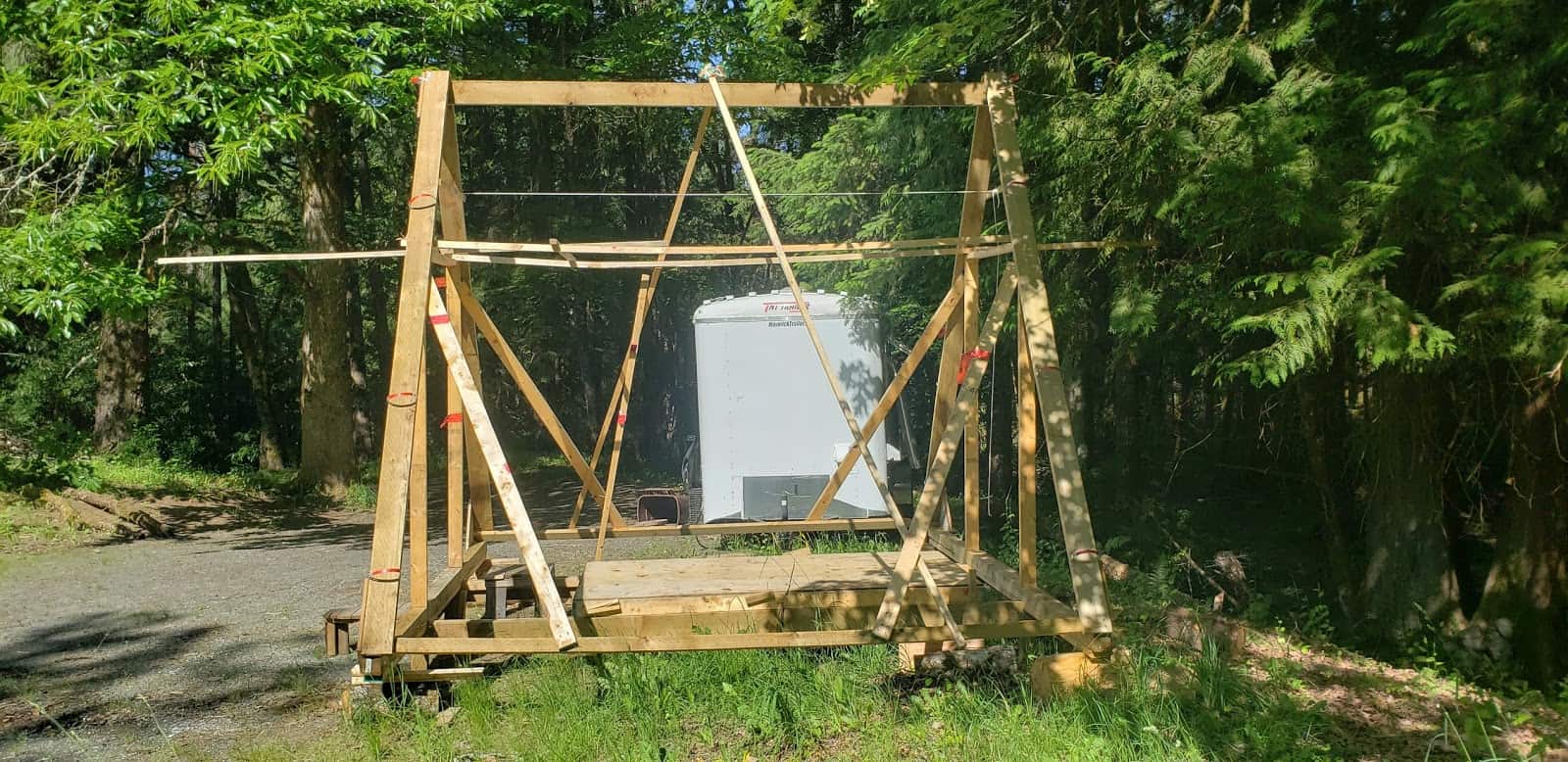
Jason Howard
Hi Corrine, this is Jason, the caregiver for Katie Steward. We’re rather urgently considering trying to put this together for her. A quick question – Katie is highly reactive to the wind, which is the main reason why tent camping doesn’t help her. Is this shelter ‘solid’ and enclosed enough for her to be able to shut herself in away from the wind and to keep it out?
With many thanks,
Corinne
Hi Jason, i used this in very high wind storms. It help up well with the frame over it. Could be made without the wood frame in less windoy conditions. the only thing is you will need some small windows for air and if it’s really windy the air will come in through those. When it was very windy I closed up more of those little windows, I had three and they had blocks of foam that could fit in to close them. You have to have some air though so you cant close them all of course. Might have to get a cardon dioxide meter so that you can monitor that while keeping the air flow as low as possible. Generally I did not have wind coming right in, the outer protection of plastic helps too.
Jason
Thank you so much for replying. That’s very helpful. Looking into materials that are available here. Not so easy when you don’t speak the language. Ideally I’d do an aluminium frame as to avoid wood because Katie can react to it but not sure that’s possible at the moment. Design looks great though. Thank you for putting it out there for us. Hope you are well
Corinne
You could seal the wood up with shellac and paint. Will block 95+% of the wood odorants
Betty Knott
My son has severe chemical, air and toxicity issues. Fireplaces, campfires, weed killers, detergents, soaps, perfumes, glues, caulking, particleboard woods and heating and air conditioners all affect him extremely.
He gets Hyperveric Chamber treatments daily and has a doctor working on removing residual chemicals from his body. This has helped but he returns to sleep in an unsafe place which seems to be getting worse.
Currently he has tremendous difficulty breathing. He needs a safe place to sleep. do you know of any RV or tiny house on the market ready for purchase? Expensive or not. desperate.
We would be very willing to pay you to discuss this over the phone…writing is extremely difficult.
Is this possible?
Corinne
Hi Betty, I’m no longer doing phone appointments.
Anna
Great info-thanks for sharing-
Corinne
You’re welcome 🙂 I just made a small model of this, testing out paints on it and made 3 videos that I will post about it.